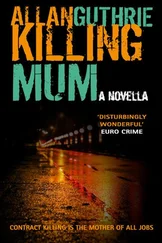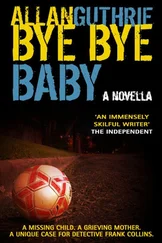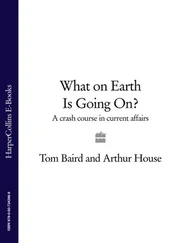They wrote that Adobe Brick book so dadgum interesting that you got to slack up every couple of pages to pull the mud and hay out from between your toes .
People around here for some reason aint got much faith in a adobe mud house. Old Timers dont seem to think it would stand up. But this here Dept of Agr. Book has got a map there in it which shows what parts of the country the dirt will work and tells in no hidden words that sun dried brick is the answer to many a dustblown familys prayer .
Since by a lot of hard work, which us dustbowlers are long on, and a very small cash cost, any family can raise a dern good house which is bug proof, fireproof, and cool in summer, and not windy inside in the winter .
I have been sort of experimenting out here in the yard with mud bricks, and after you make a bunch of em, you’d say yourself if a fellow caint raise up a house out of dust and water, by George, he caint raise it up out of nothing .
Right on hand I got a good cement man when he can get work and also a uncle of mine thats lived up here on the plains for 45 years, and he knows all of these hills and hollers and breaks in the land and canyons, and river bottoms where we can get stuff to built with, like timber and rock and sand, and he’s too old to get a job but just the right age to build .
This cement workers is just right freshly married. But could work some .
Now since this climate is fairly dry and mighty dusty, and in view of the wind that blows, and the wheat that somehow grows, why hadn’t these good cheap houses be introduced around here, which by the bricks in my back yard, I think is a big success .
If folks caint find no work at nothing else they can build em a house. There is plenty of exercise to it .
We’ve owned this little wood house for six years and it has been a blessing over and over, and the same amount of work and money spent on this house will raise one just exactly twice this good from the very well advertised dust of the earth .
It would be nearly dustproof, and a whole lot warmer, and last longer to boot. But folks around here just havent studied it out, or got no information from the government, or somehow are walking around over and overlooking their own salvation .
Local lumber yards dont advertize mud and straw because you cant find a spot on earth without it, but you see old adobe brick houses almost everywhere that are as old as Hitlers tricks, and still standing, like the Jews .
If I was aiming to preach you a sermon on the subject I would get a good lungful of air and say that man is himself a adobe house, some sort of a streamlined old temple .
But what I want to come around to before the paper runs out is this: We’re scratching our heads about where to raise this $300 and we would furnish the labor and work, and we would write up a note of some kind a telling that this house belonged to somebody else till we could pay it out. . . .
Course the payments would have to run pretty low till we could get strung out and the weather thaw out and the sun take a notion to come out, but it would be a loan and as welcome as a gift .
In this case, a few retakes on the lenders part could shore change a mighty bleak picture into a good one, and maybe an endless One .
Starting in the late 1930s, Guthrie toyed with the idea of writing a panegyric to survivors of the Dust Bowl with adobe as the leitmotif. Because John Steinbeck had stolen his thunder by writing The Grapes of Wrath , about the Okie migration westward from Oklahoma and Texas to California, Guthrie decided to focus instead on his own authentic experience as a survivor of Black Sunday and the great mud blizzard. Also, to his ears, the dialect of Steinbeck’s uprooted Joads fell short of realism. To Guthrie, true-to-life bad grammar was the essential way to capture the spirit of how people really talked on the frontier. Like Joel Chandler Harris, the author of the Uncle Remus tales, he was an excellent listener. So House of Earth , in Guthrie’s mind, would be less an adulterated documentation of the meteorological calamities than a pioneering work in capturing Texas-Okie dialects. Steinbeck, like all reporters, focused on the dust cyclones, but Guthrie knew that the frigid winter storms in West Texas during the Dust Bowl era also crippled his fellow plainsmen. Guthrie granted Steinbeck the diploma for documenting the diaspora to California. Nevertheless, he himself claimed for literature those brave and stubborn souls who decided to stay put in the Texas Panhandle. It was one thing for Steinbeck, in The Grapes of Wrath , to feature families who were searching for a land of milk and honey, but Guthrie’s own heart was with those stubborn dirt farmers who remained behind in the Great Plains to stand up to the bankers, lumber barons, and agribusinesses that had desecrated beautiful wild Texas with overgrazing, clear-cutting, strip-mining, and reckless farming practices. The gouged land and the working folks got diddly-squat … nothing … zero … nada … zilch. (For a while Guthrie used the nom de plume Alonzo Zilch.)
While Guthrie’s twenty-five-year-old heart stayed in Texas, his legs would soon be bound for California. Much like Tike Hamlin, the main character in House of Earth , Guthrie paced the floorboards of his hovel at 408 South Russell Street in Pampa during the great mud blizzard of 1937, wondering how to find meaning in the drought-stricken misery of the Depression. His salvation required a choice: to go to California or to build an adobe homestead in Texas. When the character Ella May Hamlin screams, “Why has there got to be always something to knock you down? Why is this country full of things you can’t see, things that beat you down, kick you down, throw you around, and kill out your hope?” the reader feels that Guthrie is expressing his own deep-seated frustration. He decided he would have to try his luck in California if he wanted a steady income. Having learned the Carter Family’s old-style country tunes, and with original songs like “Ramblin’ Round” and “Blowing Down This Old Dusty Road” in his repertoire, he was determined to become a folksinger who mattered. In early 1937—the exact week is unknown, but it was after the snow had thawed—Guthrie packed up his painting supplies, put new strings on his guitar, and bummed a ride in a beer delivery truck to Groom, Texas. Hopping out of the cab and waving good-bye, he started hitching down Highway 66 (what Steinbeck called the “road of flight”), where migrants were begging for food in every flyspeck town, to Los Angeles.
There is an almost biblical sense of trials and tribulations in the obstacles Guthrie would confront in California. Like all the other migrants on Highway 66, he always felt starvation banging on his rib cage. From time to time, he pawned his guitar to buy food. Like the photographer Dorothea Lange, he visited farm camps in California’s San Joaquin Valley, stunned to see so many children suffering from malnutrition. But then Guthrie’s big break came when he landed a job as an entertainer on KFVD radio in Los Angeles, singing “old-time” traditional songs with his partner Maxine Crissman (“Lefty Lou from Mizzou”). His hillbilly demeanor was affecting, and the local airwaves allowed Guthrie to reach fellow workers in migrant camps with his nostalgic songs about life in Oklahoma and Texas. For a while, he broadcast out of the XELO studio from Villa Acuña in the Mexican state of Coahuila; the station’s powerful signal went all over the American Midwest and Canada, unimpeded by topography and unfettered by FCC regulations.
Many radio station owners wanted Guthrie to be a smooth cowboy swing crooner like Bob Wills (“My Adobe Hacienda”) and Gene Autry (“Back in the Saddle Again”). Guthrie, however, had developed a different strategy for folksinging that he clung to uncompromisingly. “I hate a song that makes you think you’re not any good,” he explained. “I hate a song that makes you think that you are just born to lose. Bound to lose. No good to nobody. No good for nothing. Because you are either too old or too young or too fat or too slim or too ugly or too this or too that … songs that run you down or songs that poke fun of you on account of your bad luck or your hard traveling. I am out to fight those kinds of songs to my very last breath of air and my last drop of blood.”
Читать дальше











